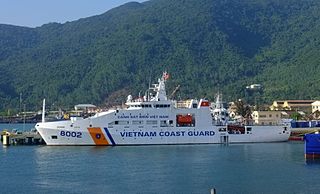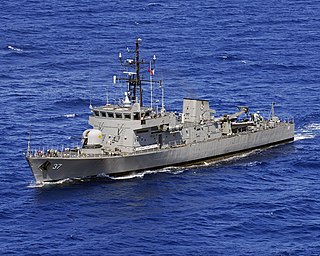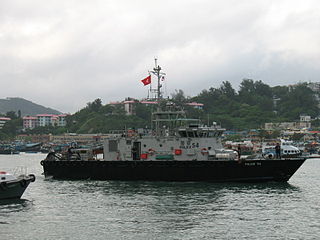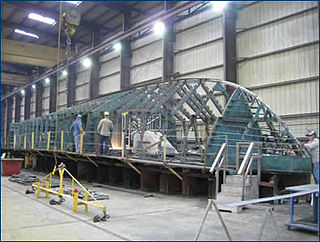
Hong Kong Island is an island in the southern part of Hong Kong. The island, known originally and on road signs simply as "Hong Kong", had a population of 1,289,500 and a population density of 16,390 per square kilometre (42,400/sq mi), as of 2023. It is the second largest island in Hong Kong, with the largest being Lantau Island. Hong Kong Island forms one of the three areas of Hong Kong, with the other two being Kowloon and the New Territories.

Green Island is an island off the northwest coast of Kennedy Town, Hong Kong Island, separated by the Sulphur Channel. A smaller island nearby to the east, uninhabited, is called Little Green Island (小青洲). Administratively, the two islands are part of Central and Western District.

The Port of Hong Kong located by the South China Sea, is a deepwater seaport dominated by trade in containerised manufactured products, and to a lesser extent raw materials and passengers. A key factor in the economic development of Hong Kong, the natural shelter and deep waters of Victoria Harbour provide ideal conditions for berthing and the handling of all types of vessels. It is one of the busiest ports in the world, in the three categories of shipping movements, cargo handled and passengers carried. This makes Hong Kong a Large-Port Metropolis.

Hongkong United Dockyards abbreviated to United Dockyards or HUD is a dockyard built on the site of the former Shek Wan or "Stone Bay", on Tsing Yi Island of Hong Kong.

Gallant Garden, in Wo Hop Shek Public Cemetery at Wo Hop Shek, Hong Kong, was established in November 1996 for civil servants who lost their lives on duty. In 2000, permanent earth burial was extended to both civil servants and non-civil servants who died with exceptional bravery while on duty. It has an area of 1,600 m2 (17,200 ft²) and is currently maintained by Food and Environmental Hygiene Department. It has 110 land burial spaces, 165 urn spaces, and a columbarium of 120 niches. There is also a large Buddhist-Taoist monastery built near the cemetery.

The Damen Group is a Dutch defence, shipbuilding, and engineering conglomerate company based in Gorinchem, Netherlands.
The Marine Region is a branch of the Hong Kong Police Force, more widely known as the Marine Police. The marine police patrols 1,651 km2 (637 sq mi) of waters within the territory of Hong Kong, including 263 islands. The Marine Region is made up of about 3,000 officers. It has a fleet of 142 boats in total, the largest of any civil police force in the world.

The Pacific class is a class of 22 patrol boats built by Australia and donated to twelve South Pacific countries. The vessels were constructed between 1985 and 1997 and are operated by the militaries, coast guards or police forces of the twelve island nations. These boats are supported by the Pacific Patrol Boat Program and used primarily for maritime surveillance and fisheries protection.

Middle Bay is a small bay in Southern District, Hong Kong Island, between Repulse Bay and South Bay. Middle Bay Beach (中灣泳灘) is located there. It is a gazetted beach with lifeguards provided by the Leisure and Cultural Services Department in the daytime during the summer months.

The Peacock class is a class of patrol corvette built for the Royal Navy. Five were constructed, and by 1997 all had been sold to the Irish Naval Service or the Philippine Navy.

BRP Apolinario Mabini (PS-36) is the second ship of the Jacinto-class corvettes currently assigned to the Offshore Combat Force of the Philippine Fleet. She is one of few ships in the Philippine Navy equipped with modern systems after the completion of combat, navigation and weapon systems upgrade of her class in August 2019. She is named after Apolinario Mabini, a hero of the Philippine revolution and a former prime minister. She was originally called HMS Plover (P240) during her service with the Royal Navy.
SS Hong Moh was a passenger ship that was wrecked on the White Rocks off Lamock Island, Swatow, on 3 March 1921 with the loss of about 900 lives.

The Marine Police Force, Royal Malaysia Police is the Marine Police division of the Royal Malaysia Police tasked with maintaining law and order and execute national security operations in the Malaysian Territorial Waters (MTW) and no boundaries till the high seas. The Marine Police Force serves under the control of the Malaysian Internal Security & Public Order (ISPO) Department with the role of safeguarding the security of Malaysian waters from any threats.

Protector -class small patrol boats are patrol boats built and used by the Hong Kong Police for marine patrols off Hong Kong. They are based on the Pacific-class patrol boat built in Australia for several Pacific island nations. Commissioned in 1993, six boats were delivered and in service:

The Transpac 52 (TP52) is a class of yacht used for competitive 52 Super Series yacht racing, and the Audi MedCup previously, besides the world championship of the class. The class is recognised by the International Sailing Federation which entitles the class to hold an Official World Championships.

The Keka-class patrol boats are vessels designed by ASC Pty. Ltd. originally for the Royal Thai Navy. A second variant series was designed for the Hong Kong Marine Police.

The Damen Stan 2600 is a line of patrol vessels built or designed by Netherlands shipbuilding firm the Damen Group.

Zodiac Milpro, headquartered in Paris, France, is a company that manufactures inflatable boats and rigid hull inflatable boats for the emergency services, military and professional users, including heavy-duty inflatable work boats that can carry payloads up to four tons and passengers for ecotourism, whale watching, etc.

Cougar is a class of fast patrol boat operated by the Navy of the Islamic Revolutionary Guard Corps of Iran.
Lam Yuen-yee was a Chief Inspector of the Hong Kong Police Force Marine Region Small Boat Division. Lam died in action on the 25th of September, 2021 near Sha Chau Island in the northwest waters of Hong Kong after a smuggling speedboat slammed into her police interceptor, causing it to capsize causing Lam and three other police officers on board to fall into the sea. While the three officers were rescued shortly after, Lam was reported missing and her body was recovered two days after near the coast of Yi O on Lantau Island.

















